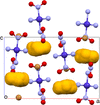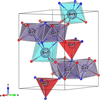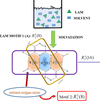issue contents
June 2024 issue

Cover illustration: Farahmand Kateshali et al. [Acta Cryst. (2024), B80, 208–218] introduce a dual-detection fluorescent sensing platform, Eu@nZCP, based on a new nanoscale ZnII coordination polymer. The 2D structure displays the microporous channels with window dimensions measuring 9.962 (5) Å × 7.396 (1) Å as observed in the packing arrangement of ZCP construction, forming a twofold interpenetrated network. The voids within the structure facilitate the incorporation of luminescent guests for sensing applications.
research papers




 access
access

 access
access




 journal menu
journal menu































